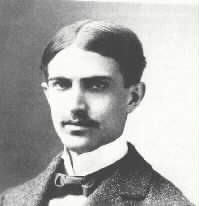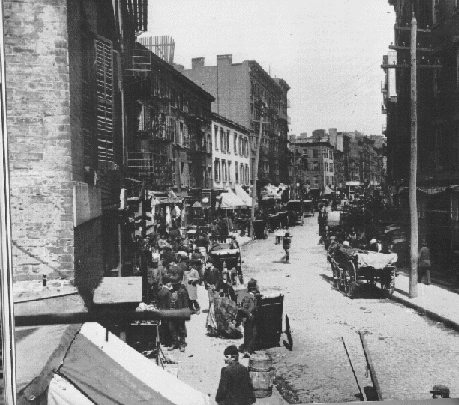
 Stephen Crane's life was restless and uneven and intensely American. Born in Newark, New Jersey, the fourteenth child of a Methodist pastor, he was the typical American boy, playing baseball, boxing, and hunting. In college he became the youngest captain and the best shortstop the Syracuse University baseball ever had. His mother, who supported the family after her husband's death, died when Stephen was eighteen, and for the next five years he lived in New York and nearly starved. The Bowery slums and a medical students' boardinghouse were his alternating surroundings while freelancing his way to a literary career. His first novel, Maggie: A Girl of the Streets, was about the people he saw there. Publishers would have none of it: it was "too honest." So Crane borrowed money to have it printed himself, sold it on newsstands at fifty cents a copy, and at the end of a year had disposed of fewer than a hundred copies.
Stephen Crane's life was restless and uneven and intensely American. Born in Newark, New Jersey, the fourteenth child of a Methodist pastor, he was the typical American boy, playing baseball, boxing, and hunting. In college he became the youngest captain and the best shortstop the Syracuse University baseball ever had. His mother, who supported the family after her husband's death, died when Stephen was eighteen, and for the next five years he lived in New York and nearly starved. The Bowery slums and a medical students' boardinghouse were his alternating surroundings while freelancing his way to a literary career. His first novel, Maggie: A Girl of the Streets, was about the people he saw there. Publishers would have none of it: it was "too honest." So Crane borrowed money to have it printed himself, sold it on newsstands at fifty cents a copy, and at the end of a year had disposed of fewer than a hundred copies.

Not until The Red Badge of Courage was published in 1895 did Stephen Crane reach success. Though he was born six years after the Civil War ended, Crane was widely praised by veterans for his uncanny power to imagine and reproduce the sense of actual combat. The editors who had formerly turned him down now hounded him for stories. Overnight the boy who often hadn't a roof over his head knew comparative security, but he spent what he earned as fast as he got it.
After being a war correspondent—reporting the Greco-Turkish and the Spanish-American wars—Crane rented an old English castle and for a short time settled down with his wife to the role of American-turned-English-squire, with dogs and horses and a constant houseful of guests. His hospitality was so lavish as to bring ridicule upon him from the many English and Americans who took advantage of it. He had had tuberculosis for several years, and before going to England had married the woman who had nursed him through two serious attacks—a woman older than he and of no great refinement, who nonetheless made him the best of wives. Again he grew ill, once more was in debt and unable to work. He died before he was twenty-nine.
 In the best of his work, Crane shows a rare ability to shape colorful settings, dramatic action, and perceptive characterization into ironic explorations of human nature and destiny. Joseph Conrad said of "The Open Boat" that "by the deep and simple humanity of its presentation [the story] seems somehow to illustrate the essentials of life itself, like a symbolic tale." Crane's literary generation was a tragic one, also losing Frank Norris and Harold Frederic prematurely from its ranks.
In the best of his work, Crane shows a rare ability to shape colorful settings, dramatic action, and perceptive characterization into ironic explorations of human nature and destiny. Joseph Conrad said of "The Open Boat" that "by the deep and simple humanity of its presentation [the story] seems somehow to illustrate the essentials of life itself, like a symbolic tale." Crane's literary generation was a tragic one, also losing Frank Norris and Harold Frederic prematurely from its ranks.
Willa Cather, in 1931, said of Stephen Crane, "He died young, but he had done something real. One can read him today," an observation that is still true today, sixty-nine years later, and, most probably, will be true forever.
